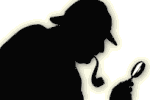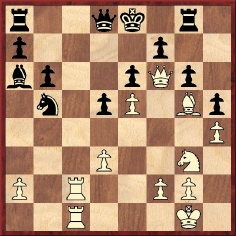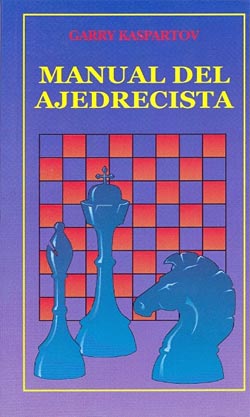


By Edward Winter
First, a deceptively simple-looking matter. There follows, from pages 161-162 of Karpov on Karpov (New York, 1991), a description of the mid-1970s discussions between Fischer and Karpov on a possible world championship match:
‘After the talks we set out for a stroll around Tokyo. I was afraid that autograph hounds would harass us, but, to my amazement, not one person approached us. Here were two of the best chessplayers in modern times, whose photographs practically never left the front page, walking down the street – you’d think at least someone would have noticed. Later I understood that such a thing is possible in only one place on earth: Tokyo.
One photograph – the only one in which Fischer and I are together – was taken. The chairman of the Japanese Chess Federation, Matsumoto, ingratiated himself with Fischer, who disliked journalists even more than their articles, and took our picture “for his family album”. A few days later the shot was sold to Agence France-Presse, who in turn distributed it worldwide.’
The reference to worldwide distribution suggests that the photograph of Fischer and Karpov should be commonplace, but who knows where it has been published?
Shortly after David Bronstein’s death in 2006 Pierre Bourget (Canada) mentioned the game D. Bronstein v B. Goldenov, Kiev, 1944, which is given in various databases as follows: 1 e4 e6 2 d4 d5 3 Nc3 Nf6 4 Bg5 Bb4 5 e5 h6 6 Bd2 Bxc3 7 bxc3 Ne4 8 Qg4 g6 9 Bc1 c5 10 Bd3 cxd4 11 Ne2 Nc5 12 cxd4 Nxd3+ 13 cxd3 b6 14 h4 h5 15 Qf3 Nc6 16 Bg5 Ne7 17 O-O Ba6 18 Rac1 Qd7 19 Qf6 Rg8 20 Rc3 Nf5 21 Ng3 Nxd4 22 Rfc1 Nb5 23 R3c2 Qd8 24 Qf4 Qd7 25 a4 Resigns.
However, Mr Bourget pointed out that this game has appeared elsewhere, and most notably in the later editions of The Golden Treasury of Chess by F. Wellmuth/I.A. Horowitz, as ending on move 24 with, in the words of that book, ‘one of the most amazing winning moves on record’:

24 Rc8.
The Treasury gave the move three exclamation marks, but what is the truth about the conclusion to the game?

In C.N. 4150 Miquel Artigas (Spain) drew attention to a 128-page book in Spanish published in 1999 by Ediciones Altosa with a hitherto unknown chess author on the front cover: ‘Garry Kaspartov’. Noting that the book was badly written, technically weak and old-fashioned, our correspondent quoted the following examples in an attempt to help identify the origins of the text:
Capítulo III. Regla 3ª (page 29): “Si se ha empezado una partida con una pieza de menos habiéndose efectuado la cuarta jugada de ambas partes, será obligatorio acabar la partida sin poder colocar la pieza olvidada en su lugar correspondiente.” [If a game has been begun with a piece missing and both players have made their fourth moves, it shall be obligatory to complete the game without being able to put the forgotten piece at its appropriate place.]
Regla 17ª (page 32): “El que da de ventaja una torre, puede igualmente enrocar del lado en que falta esta torre diciendo: enroco.” [The player giving the odds of a rook may also castle on the side where this rook has been removed, saying: I castle.]
Capítulo XVI. Consejos (page 121): “Tenemos que procurar hacer el enroque lo antes posible y siempre antes de las ocho primeras jugadas, siendo este síntoma ideal.” [We must manage to castle as early as possible and always within the first eight moves, this being the ideal method.]
Who was responsible for bringing out such a book and using the misleading name ‘Kaspartov’? The text bears no resemblance to any known writing by Garry Kasparov. In a subsequent C.N. item we mentioned that the only master game presented in the book was the following:

The above victory by Keres in the 1965 USSR Championship was, in fact, against Kuzmin, not Simagin. Is that perhaps a helpful clue as to the provenance of the Spanish volume? Have any other books made the same factual mistake?
Finally in the present selection, there is the alleged picture of Hitler playing chess against Lenin:

Raising this topic in Chess Notes, Edward Hamelrath (Germany) wrote:
‘This etching comes from the extreme right-wing (and now defunct) magazine Europa Vorn (spezial Nr. 1/4. Quartal 1991), in an article entitled “Ungeist aus der Flasche” by a “v. Freisaß”. The article is just a rambling diatribe on twentieth-century world politics and makes no reference to the picture itself. It is not even clear exactly what the title is – either “Lenin mit Hitler” or “‘Lenin mit Hitler’ beim Schachspiel in Wien 1909”. (The “Das Oberkommando ...” comment under the picture was simply plucked out of the text.) In any case, the Hitler figure corresponds more to his appearance in the mid-1920s than in 1909.’
Such a picture should, of course, be viewed with extreme circumspection, but what more can be discovered? All we can add at present is a reference to Hitler having possibly played chess with Lenin in Vienna in 1909 which appeared on page 188 of Persönlichkeiten und das Schachspiel by B. Rüegsegger (Huttwil, 2000):
‘Die jüdische Malerin Emma Löwenstamm (1879-1941) brachte in Wien Hitler und Lenin zusammen, um sie gemeinsam zu malen. Sie lud beide ins Atelier von Julius von Ludassy ein. Im Donau-Kurier Ingoldstadt vom 19. July 1984 erwähnt Bernd Kallina in seinem Artikel die damals angefertige Zeichnung, wo Lenin auf der Rückseite die Worte “Lenin mit Hitler” hingeschrieben haben soll.’
Weiter wird erwähnt, dass sich beide 1909 in Wien getroffen und zusammen Schach gespielt haben.’
Submit information or suggestions on chess mysteries
 Edward
Winter is the editor of Chess
Notes, which was founded in January 1982 as "a forum for aficionados
to discuss all matters relating to the Royal Pastime". Since then around
5,000 items have been published, and the series has resulted in four books by
Winter: Chess
Explorations (1996), Kings,
Commoners and Knaves (1999), A
Chess Omnibus (2003) and Chess
Facts and Fables (2006). He is also the author of a monograph
on Capablanca (1989).
Edward
Winter is the editor of Chess
Notes, which was founded in January 1982 as "a forum for aficionados
to discuss all matters relating to the Royal Pastime". Since then around
5,000 items have been published, and the series has resulted in four books by
Winter: Chess
Explorations (1996), Kings,
Commoners and Knaves (1999), A
Chess Omnibus (2003) and Chess
Facts and Fables (2006). He is also the author of a monograph
on Capablanca (1989).
Chess Notes is well known for its historical research, and anyone browsing in its archives will find a wealth of unknown games, accounts of historical mysteries, quotes and quips, and other material of every kind imaginable. Correspondents from around the world contribute items, and they include not only "ordinary readers" but also some eminent historians – and, indeed, some eminent masters. Chess Notes is located at the Chess History Center.